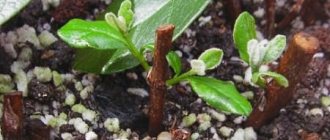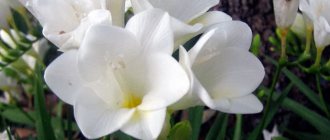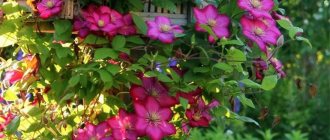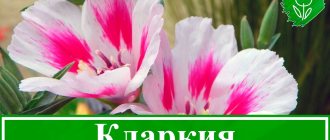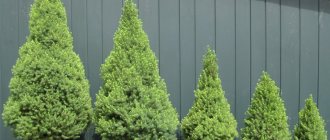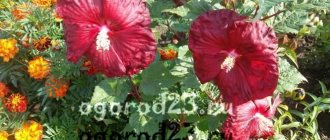Remontant varieties are characterized by continuous fruiting. The ripening of berries begins in June and continues until frost. It is this property that attracts most summer residents, but not everyone knows about the rules for growing this type of aromatic berry. Most gardeners grow remontant varieties like regular strawberries, and then are perplexed when they do not find the declared characteristics.
It is quite possible to grow remontant varieties of strawberries in your summer cottage, you just need to spend a little more time and effort on care. It is also important to follow certain rules of agricultural technology; they differ slightly from the procedure for growing the so-called disposable strawberries.
It’s worth warning right away: gardeners with limited time for care, who visit their plots periodically, should immediately stop breeding remontants. They require much more attention in the form of frequent feeding and watering. Otherwise, expectations of a large and regular harvest may not be justified.
Features of remontant strawberries
Remontant strawberries differ from ordinary strawberries in the time of fruit bud formation. In ordinary strawberries, fruit buds are formed during short daylight hours, and in remontant strawberries, during neutral or long ones. Therefore, remontant varieties, when grown in open ground, bear fruit twice a season: the first time in July, and the second time at the end of August/beginning of September.
The second harvest may be much larger than the first. It can even account for up to 90% of the total number of berries per bush per season, although most often this figure approaches the 60% mark.
Remontant varieties are large-fruited. The weight of 1 berry in some cases can even reach 100 grams. On average, the weight of 1 berry varies from 20 to 75 grams, depending on the variety.
In the absence of special care, already in the second year of growth of the bush, the berries are small and sparse, and in the third year the plant most often dies.
What determines the timing of transplantation?
The time of work is chosen taking into account the genetic potential of the variety, its resistance to diseases and pests, the microclimate of the area, and care. Some varieties are depleted in 1-2 years, others in 5-6 years. Some day-neutral varieties, such as small-fruited alpine strawberries, develop very intensively. They need to be replanted after a year.
Bearless strawberry
Remontant strawberries need to be replanted in the spring, early summer before fruiting, or in the fall after harvesting. The optimal period for renewing strawberries is the end of August. Select the timing of the work yourself, taking into account the weather conditions of your region, the microclimate of the site, the presence of well-developed mustaches or strong bushes.
Soil preparation
It is better to grow these varieties of strawberries in the area where crops such as carrots, parsley, garlic, radishes, beets or legumes previously grew. At the same time, it is not recommended to plant this crop after potatoes or cucumbers (as well as after tomatoes and cabbage). In addition, it is better not to grow this plant next to raspberries.
The area chosen for planting should be in direct sunlight. In addition, the soil on the site should be level and free of bumps and depressions. Location in lowlands is not allowed.
It is best if the garden bed has sandy or loamy soil. Peat soil, like sod-podzolic soil, is not suitable for growing this crop.
The soil for planting should be either slightly acidic or neutral. It is necessary to prepare the soil for planting in advance. If the crop is planned to be planted in the spring, then preparation is carried out in the fall; if planting will be done in the fall, then the soil is prepared in the spring or summer.
At the beginning of preparation, it is necessary to dig up the ground with a pitchfork and level it with a rake. During digging, it is necessary to remove weed roots and also add fertilizer. As such fertilizers, you can use humus or compost in the amount of 1 bucket per square meter of land. It is also necessary to add 5 kg of wood ash to the soil (the figure is based on 10 square meters).
Once the soil has been fertilized, dug up and leveled, it can be left until planting. A month before the intended planting of the bushes, it is necessary to add potassium sulfate (in the amount of 20 g) to the soil with the addition of superphosphate, which must be taken twice as much as potassium sulfate (the numbers are based on each square meter). After applying the fertilizer, the soil is dug up again.
How to properly regulate watering
The lid of the growing container will help with this difficult task. If there is condensation on its surface, then the humidity is at the proper level and watering is not needed at this stage.
When condensation collects in drops, there is a real threat of waterlogging, which can have a harmful effect on plants. The lid therefore needs to be opened slightly.
If there is completely no condensation on the lid, the seedlings need immediate but gentle (at the root) watering.
Remove the lid gradually and no earlier than 3-4 days after the sprouts appear.
Planting seedlings
With different planting methods, care also differs. The planting time for each type of strawberry may also differ.
Dates and methods of planting
Planting in the ground is carried out in the autumn or in the spring. For the southern regions, it is preferable to plant seedlings in the ground in early September, while for the northern regions it is preferable to plant seedlings in the spring months, but not earlier than May.
For central Russia, it is preferable to choose the autumn months, from the beginning of August to the end of September, but it is also possible in the beginning of spring - from the end of March to mid-April.
You should focus on the temperature regime: the optimal air temperature when planting seedlings is 15-25 degrees Celsius.
Methods of planting seedlings in the ground
- carpet;
- nesting;
- private.
With the nesting method, the distance between plants is set at least half a meter. This method of planting seedlings is suitable for varieties that throw out tendrils. This planting method allows you to get not only a good harvest, but also high-quality planting material.
The advantage of this planting method is that the plants do not come into contact with each other, which means they do not infect each other when diseases occur. In addition, the bushes are well lit, as they do not shade each other.
Among the disadvantages are unused areas of land, of which there are quite a lot with this planting method, since the distance between the bushes is approximately 50 cm.
The distance between strawberry bushes is set at 20 cm - this is with the carpet method. Moreover, 20 cm is not only the distance between the bushes of the 1st row, but also the distance between the rows.
With the row method of planting this crop, a larger distance between the rows is provided - up to 70 cm, while the distance between the bushes remains the same - from 20 to 25 cm. The bushes will grow over time, at the same time the area of the plantation will increase.
Is it possible to replant strawberries?
You can replant strawberries
not only in August, but also in spring.
For what? Usually, as
soon as a strawberry plantation is three years old, it begins to form a very large number of whiskers, such is the biology of the crop. The buds from which they develop dry out and freeze.
Interesting materials:
Where and for what are scanners used? Where and how is peat used? Where and how to properly store carrots? Where are the printer's temporary files stored? Where to store pears for ripening? Where to store zucchini in the apartment? Where is the Pairing button on the Samsung remote? Where do pansies like to grow? Where does birch like to grow? Where does cauliflower like to grow?
Methods of growing in open ground
There are many ways to grow this crop. For small summer cottages, non-standard planting methods have been specially developed, which greatly save space on the site.
On the ground in the beds
Among the classic ones, two methods of planting can be distinguished:
- one-liner:
- two-line.
With the one-line method, the distance between the rows is maintained at least 60 cm, and with the two-line method - no more than 30. The one-line planting method is safer for plants, since they do not come into contact with each other and, accordingly, cannot infect each other.
The two-line planting method increases yields because the soil is used more efficiently.
For small areas, there are other ways to plant remontant strawberries in open ground, for example, the vertical method or “in bags.”
Vertical method
With the vertical method, strawberries are planted in pots, cut pipes, tires, boxes or any other containers that can be placed vertically. At the same time, space is greatly saved, since pots with bushes can be placed vertically on several floors. But in this case, care becomes a little more complicated.
"In bags"
When planting in bags, plastic bags are used in which soil is placed, and seedlings are planted in it. Such bags are hung vertically, which also saves space. Holes are made for plants.
Under covering material
Planting a bush of this crop under covering material makes caring for the plant much easier. Growing strawberries in this way allows you to create a microclimate in which the soil does not dry out, but at the same time, due to the lack of sunlight, weeds do not grow under the agrofibre.
In addition, due to the constant humidity under the covering material, earthworms begin to actively live and loosen the soil, so caring for strawberries planted in this way is much simpler.
The berries do not come into direct contact with the soil and this has a beneficial effect on the quality of the product. Therefore, growing remontant strawberries under covering material is a fairly progressive way to get high yields at fairly low costs.
Problems and solutions
To enjoy juicy, delicious berries all summer, you must follow the rules for growing strawberries. Take responsibility when choosing a location in your garden plot, prepare the soil and provide the bushes with appropriate care.
| Problem | Cause | Solution |
| Doesn't bloom | Lack of nutrients, water and light | Fertilize, arrange watering, transplant to a sunnier place |
| Doesn't bear fruit | Too many mustaches sapping energy | Trim the mustache and replant it |
| Leaves turn yellow and dry out | Lack of moisture, thermal burn | Provide regular watering in the morning or evening hours |
Drying leaves
Caring for remontant strawberries during the active growing season
The number of bushes, the quality of the root system and, as a result, the number and size of berries collected from one bush per season depend on the quality and correct care of the plant.
Watering and fertilizing
During the growing season, sufficient attention should be paid to soil moisture. If there is a lack of moisture in the soil, insufficient formation of the ovary or the formation of fruits of irregular shape may occur. All this has a detrimental effect on the quantity and quality of the harvest. Therefore, watering should be regular.
Mulching open areas of land around bushes will help reduce the costs associated with regular soil irrigation. This will lead to moisture retention in the soil, which in turn will allow the plantation to be watered less frequently.
In spring it is necessary to fertilize the soil. For this purpose, ammonium nitrate and potassium sulfate are used. Their quantity is calculated based on the formula: 15 g of substance per 1 square meter of soil.
This calculation is correct for both types of fertilizers. Superphosphate is also used for feeding. Per square meter it is needed twice as much as potassium sulfate.
Pruning remontant strawberries
During the growing season it is necessary to trim the mustache. This should be done throughout the spring and summer period. If you plan to grow new shoots, then the mustaches are not cut, but dug in, and thus by August there will already be young bushes that are ready for replanting. In autumn, pruning of leaves and tendrils is carried out.
All red, blackened, dried or infected shoots are removed. In this way, the bush prepares for wintering in order to more easily endure the winter cold.
What and how affects the quality of the crop
The quality and quantity of the harvest is affected by proper care of bushes and young shoots. The amount of harvest is greatly influenced by the regularity of watering and the absence of pests and diseases in the plant. In addition, the benefits of regular feeding should not be underestimated. During the growing season, fertilizing can be done twice a month.
Also, the correct trimming of the mustache has a great influence on the quality of the harvest. Because young shoots require a lot of effort to take root.
In the absence of proper care for the bushes, the strawberries will be few and small.
Pests, diseases and ways to combat them
Remontant strawberries are susceptible to the following diseases:
- Gray rot (the most common disease).
- Powdery mildew.
- Late blight.
- Leaf spotting.
- Stem nematode.
- Fungal diseases.
Powdery mildew
In order to get rid of the disease and prevent infection of all bushes, it is necessary to remove the affected berries and leaves. After which the plants are treated with copper chloride (for gray rot and spotting) or colloidal sulfur (for powdery mildew).
The strawberry mite is the most dangerous pest for strawberries. The fight against it consists of spraying the bushes with Karbofos . Remontant varieties also suffer from spider mites if the soil is dry. The soil should be watered regularly. To get rid of ants, you need to add vegetable oil or a little boric acid to the water before watering.
Propagation of remontant strawberries
Propagation of remontant strawberry varieties is carried out in at least three ways:
- growing from seeds;
- by dividing the bush;
- and with the help of a mustache.
Growing seedlings from seeds
When growing strawberries from seeds, the purest varieties are obtained. This planting method is very labor-intensive, since it is carried out in the spring and lasts for several months.
Seeds must be prepared in advance. Preparations must begin as early as February, and only in mid-May will the seedlings be ready and need to be planted in the beds.
Dividing the bush
The method of propagating remontant strawberries by dividing the bush is resorted to in case of an insufficient number of seedlings or when it is necessary to quickly move part of the plantation to another place. To grow strawberries using this method, you need strong and healthy plants. Therefore, they choose either two-year-old or four-year-old bushes. Their root system should be strong and healthy.
At 4 years of age, the bush has several dozen shoots of horns. Each horn is already well developed, has lateral buds and formed leaves. In addition, it has well-developed adventitious roots. Such plants can be planted only in spring, or in emergency cases - in early autumn. Having dug such bushes from the ground, they must be divided and planted immediately.
After transplanting, it is necessary to water the plants daily. If it is scorching hot outside at this time, it is necessary to provide the young seedlings with constant shade.
Reproduction by mustache
Propagation by mustache is an economical method that is the easiest in terms of labor costs. In addition, new bushes obtained in this way give a harvest next year.
However, when propagating strawberries using this method, it is necessary to sacrifice the second harvest of the season. The fact is that the strawberry bush spends energy either on the formation of berries, or on the development and rooting of the mustache. Therefore, if you want to obtain high-quality planting material, you must refuse to obtain a second harvest.
For propagation in this way, annual bushes are selected that, at the first fruiting, produced large, even berries. The first tendrils that appear must be spread around the bush, giving them the opportunity to take root. Whiskers that appear later must simply be removed.
By August the young bushes will be ready. A week before moving them to a new place, it is necessary to trim the mustache that connects them to the mother bush. Young bushes are transplanted to a new location using a small spatula.
It is advisable to move the bushes with a small lump of earth, this way the root system will suffer less and the plant will more easily tolerate replanting.
Autumn preparation for winter
Autumn preparation involves removing everything that could prevent the bush from overwintering normally and bearing fruit with renewed vigor starting in the new season. This means removing any runners that have not taken root, as well as any damaged, reddened or weak leaves.
In addition, in harsh winters, any strawberries must be covered. It is better to choose a material whose density is about 60 grams per square meter. Agrofibre, spunbond or any other material is suitable for these purposes.
Mulch, pine needles, leaves or grass are also used to cover strawberries. Although this method appears to be more economical than purchasing fiber, there are a number of disadvantages to using it. In this case, mice may appear in the shelter, which are enemies of strawberries. They damage shoots and dig tunnels.
When covering a strawberry plantation, it is better to opt for special covering materials or thick plastic film.
Varieties of remontant strawberries
There are several dozen varieties of remontant strawberries. Only a few of them will be described below.
Autumn fun
This variety was popular back in Soviet times; it was one of the first to be included in the Soviet DSD selection. The bush of this variety bears fruit twice a season, with proper care. The berries are small in size, their weight most often does not exceed 20 g. The taste of the berries is quite sweet; the fruits of this variety of strawberries are used to create all kinds of desserts. The pulp of this species is quite dense, so they are often used for freezing.
This variety is propagated with the help of mustaches, of which the bush produces a lot during the season. The variety is also resistant to attacks by fungal infections and strawberry mites.
Russian size
This variety is distinguished by large fruits. Moreover, it is frost-resistant and therefore suitable for cultivation in more northern regions. The berries are very juicy, the plants are resistant to diseases.
Galya Chiv
A fairly new hybrid variety, bred in Italy, which is characterized by high productivity. The average weight of one berry is about 45 g. The color of the berries is bright red, in addition, they are distinguished by their high sugar content.
Vima Rina
This is a Dutch variety; it lays fruit buds during neutral daylight hours. Vima Rina practically does not produce antennae, so it is propagated in other ways. This variety bears fruit starting from the second half of June and continues until the first frost.
The color of Vima Rin's berries is deep red, darker than those of other varieties. The fruits are large, weighing up to 75 g. The taste of this strawberry is sweet and soft, and the density of the berries is low (they are not suitable for freezing).
Diamond
Diamond is an American variety. At the moment it is considered the best among all varieties of remontant strawberries.
This species is propagated using a mustache.
Selva
This variety is one of the best. Firstly, it is very highly productive, and secondly, it has excellent taste. Large fruits, reaching 50 g, are dark red in color, and have light flesh inside.
Queen Elizabeth 2
For Queen Elizabeth II, the weight of 1 berry can reach record figures of up to 110 grams. This is a very frost-resistant variety and produces its first fruits quite early.
Novel
This hybrid variety has pink flowers. This feature makes it easy to distinguish Roman from other types of remontant strawberries.
This variety can be grown in protected soil. With proper care, it can bear fruit for up to 10 months a year. The berries are not large - up to 25 grams.
Lyubasha
Lyubasha is unpretentious, frost-resistant, has small, dark red fruits. Most often it is used for vertical cultivation, since the berries are formed not only on bushes, but also on rosettes.
Kinds
Dozens of varieties of remontant strawberries have been bred, but the most common are:
- Albion - has round berries. The color of the berries is dark red. Weight – 60 gr. The variety allows you to harvest all year round.
- Lyubava. Fruits are formed on rosettes or uterine bushes. The shape of the berries is oval-rhombic. There is a strawberry flavor, the berries weigh 50-60 grams.
- Queen Elizabeth - with proper care and planting, it allows you to collect 1500 grams from a bush per season. berries The pulp of bright raspberry fruits is juicy and aromatic. The number of whiskers on the bush is small. The weight of the berry can reach up to 100 grams.
